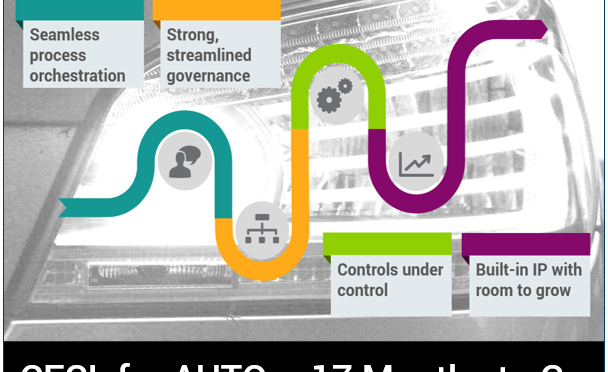CECL for Auto Finance – How to Get Set for CECL?
Blog: Enterprise Decision Management Blog

How to get set for CECL
In my last blog post, I started to outline my “10 Requirements for an Effective CECL Software Solution,” where I focused on three requirements your organization needs to do to get ready for CECL implementation. This post will address four requirements for getting set for CECL, i.e. what capabilities your solution must have to provide a stable platform for CECL execution and analysis.
4) How to get set for CECL – Seamless process orchestration
A robust CECL software solution will orchestrate all end-to-end expected credit loss (ECL) calculations from data input to component model calculations to final reporting and detailed outputs. It will automate processes wherever possible but will also allow manual intervention where required to incorporate management overrides.
This orchestration will occur “behind the scenes” but the effects still need to be transparent to the user. All inputs, models, calculations, parameters and key outputs should be fully auditable. CECL calculations involve a number of moving parts that need to work in concert without user interference, reliably and repeatedly.
5) How to get set for CECL – Strong, streamlined governance
CECL software should provide a robust governance framework, including process change management, user access privileges and detailed change controls around key inputs and assumptions. CECL introduces new review points into the ECL process and reinforces the need for strong governance throughout given the additional complexity. New recurring governance processes need to be created to approve or update the baseline macroeconomic forecast, to approve and justify judgmental overlays and to review the drivers of actual calculations. Of course, model governance requirements will grow as well given the new suites of CECL models to validate, monitor and redevelop over time.
Further, given the multi-disciplinary nature of CECL and its impacts on multiple business areas, good governance demands ongoing frequent interaction among a diverse range of stakeholders. Building a common vocabulary and a shared understanding of CECL calculations and their key business drivers is essential to making these dialogues productive.
6) How to get set for CECL – Controls under control
CECL software should include strong built-in controls to confirm data quality, isolate calculation issues and support process auditability. It should allow drill-down of calculations to individual account level calculations if applicable and detailed components where needed. Data quality checks must be designed to catch errors and exceptions. Outcomes must be reviewed to ensure that they fall within a reasonable range and do not vary unexpectedly from one period to the next. Process logs should be created with sufficient detail to confirm when steps were executed without issues, where warnings were generated, and where processes failed and why.
7) How to get set for CECL – Built-in IP with room to grow
Software should specifically consider CECL-related concepts, yet remain adaptable enough to deal with a range of user requirements. For example, a strong solution will pre-configure a variety of CECL-specific reports but also allow users to define custom segments, date ranges and variable combinations. The software should orchestrate CECL-specific processes yet accommodate a range of model types and methodologies, data formats and structures, and account exclusions.
Striking the right balance between built-in IP and flexibility is critical as many organizations will evolve their approach to CECL modeling over time, which may include significant changes to model methodologies, data sources or even coding languages. Too much flexibility means you’re starting with a largely blank slate and will spend too much time, money and effort getting a custom implementation and configuration suitable for your business. Too much pre-configured IP means you’re boxed into a prescriptive approach that may not meet your current requirements or adapt well over time.
Fulfilling the above capabilities well ahead of implementation will help establish a stable yet flexible CECL execution platform. Combining them with the requirements outlined in my last post will set your organization up to drive business insights from the changes implied by CECL given your current strategies, and the strategy changes you should make in response.
All of this will require a significant amount of work to meet the implementation deadline of 15 December 2019, which is now 17 months away.
I’ll cover the rest in my final post of this series. Stay tuned!
You may also be interested to read how Chartis ranked IT providers for CECL (spoiler alert, FICO did well!)
The post CECL for Auto Finance – How to Get Set for CECL? appeared first on FICO.
Leave a Comment
You must be logged in to post a comment.







